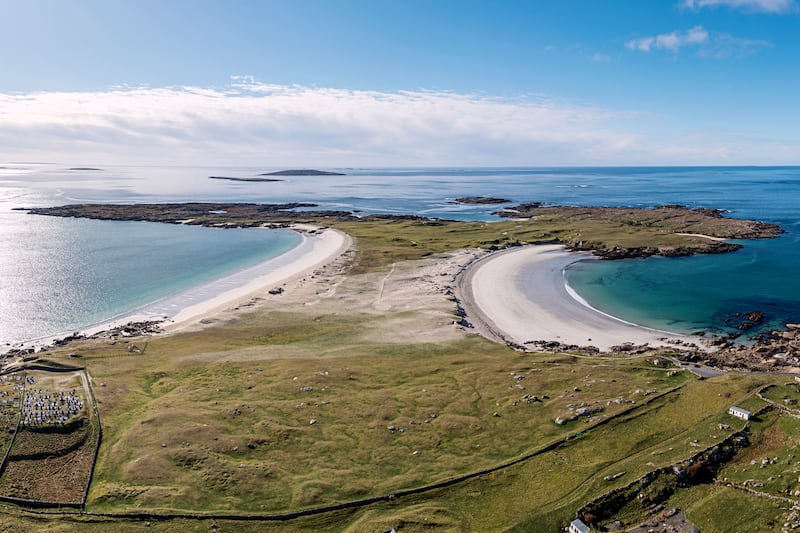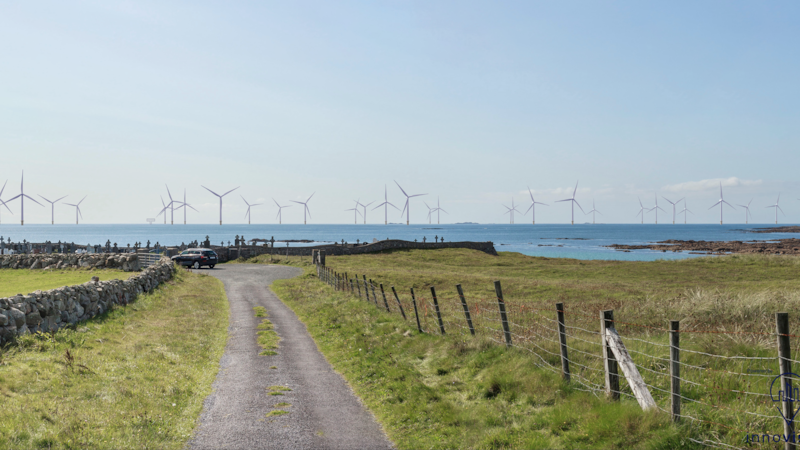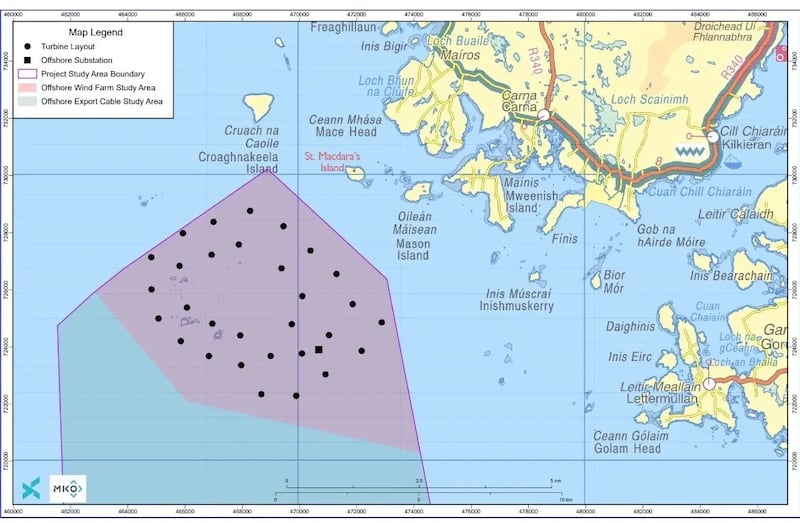An environmental group opposed to the west of Ireland’s first offshore wind farm, proposed for Sceirde Rocks off south Connemara, has said it is to scale up its campaign.
Conamara Coastal Protection said it would highlight its proximity to a pristine coastline, its visual intrusion and its threat to the nearshore marine environment and local heritage.
Corio Generation, owned by Australian investment bank Macquarie, has confirmed it obtained a six-month extension to allow it submit a planning application, environmental impact assessment report and Natura impact statement to An Bord Pleanála by the end of December 2024.
Sceirde Rocks wind farm, with capacity to continuously generate 450 megawatts and power 350,000 homes, is one of four offshore wind farms awarded State contracts to supply renewable power by 2030. But Minister for Energy Eamon Ryan’s target that they would go to planning (the last hurdle before construction) this summer is going to be missed.
READ MORE
Micheál Cloherty from Muighinis, a well-known building contractor involved in the campaign, said the public mood changed when photomontages illustrating the visual impact of the €1.5 billion project, involving 30 turbines more than 300m tall, were released by Corio’s subsidiary, Fuinneamh Sceirde Teoranta (FST), in April.
[ Eamon Ryan’s extra measures to combat climate change are magical thinkingOpens in new window ]
Within days, 3,500 people had signed a petition opposing “the size and proximity of the turbines to shore”, claiming it would “recklessly damage the marine environment”.
“Three thousand and five hundred people is a lot of people. We are hopeful that will double by the end of the year,” he said.
It’s about raising awareness throughout Connemara, he added. “People in Lettermullan and Lettermore don’t know about it… consultation was confined to Carna.”

He attended two consultation meetings hosted by Corio. When he suggested using floating technology farther out to sea, he was told it would cost too much, he said.
Visual impact was the big worry in his area, with the closest turbine just 5km away. But he is also concerned about damage to a highly sensitive part of a special area of conservation. Three years ago, his sister was refused planning permission for a house. “It’s hard to understand how a wind farm with 30 turbines, [taller than] the Eiffel Tower, would be allowed go there.”
With likely wider environmental impacts on marine life and birds, he said: “It would be devastating. It’s a pristine coastline. People don’t realise fishing will not be the same because of it.”
[ Bord Gáis Energy to enter offshore wind market after deal with Corio GenerationOpens in new window ]
He described consultation as “a strange process”. He was invited to a session for businesses but a lot of technical details were not provided such as accurate co-ordinates of the site, he said.
In advance of a €70 million community benefit fund over 20 years should it go ahead, Mr Cloherty said large sums in sponsorship were being paid out by Corio.
The committee organising St MacDara’s Day Festival, where Galway hookers race every July, was offered money but refused it. Other regattas in Lettermore and Carraroe got sponsorship, he said.
He understood FST promised a substantial sum of money for a new GAA pitch in Carna. According to another source, it provided “a modest sum for the new pitch and community walkways in Carna”.
Corio said: “We are pleased to have been able to support over 60 local community groups and initiatives, including Irish language and cultural events, schools and sailing and sports clubs, distributing over €120,000 to date.”
The company has defended the consultation process.
Mr Cloherty was particularly concerned when the Galway Hookers Association was offered money. “As a sailor, I won’t be able to sail around the turbines” south of Muighinis, Mason and MacDara islands, he said.
He does not know how much fishermen were compensated to stay away from fishing grounds while site surveys were completed. FST declined to indicate how much was paid out.

Elin Payne who lives at Ard Thiar, Carna, said Conamara Coastal Protection strongly supported the transition to renewable energy to achieve necessary climate goals but “development of large-scale industrial offshore wind farms can and must be done using ecosystem-based marine spatial planning that protects sensitive marine and coastal habitats and species”.
“Appropriate plan-led site selection is crucial for preventing critical ecological damage to the very environment that’s meant to be protected by the transition to renewable energy,” she added.
“I went to FST’s public consultation and came away feeling more informed but still insufficiently informed.”
She was still unclear on “why is this the only site selected on the west coast when it has such high marine/coastal biodiversity, so many environmentally protected areas and heritage sites, and such renowned scenic value”.
“While watching the summer Olympics, I’ve been struck by images of the Eiffel Tower looming enormously over Paris. There’ll be 30 turbines that high very close to shore in Carna. Seems impossible to imagine. We’ve nothing comparable here.”
Many onshore wind turbines in their area were far shorter. “For instance, the 58 turbines in Galway Wind Park [near Oughterard] are up to 156m tall – less than half the height of the 325m-tall turbines planned for Sceirde Rocks.”
Ms Payne believed people, including many living along the east coast where the three other wind farms are due to be located, don’t realise the size of modern turbines. “In a couple of years, Ireland is going to look a lot different and we’re all going to say ‘how did that happen?’”

- Sign up for push alerts and have the best news, analysis and comment delivered directly to your phone
- Find The Irish Times on WhatsApp and stay up to date
- Our In The News podcast is now published daily – Find the latest episode here
















